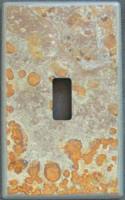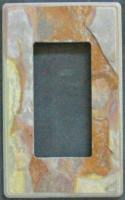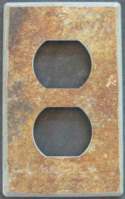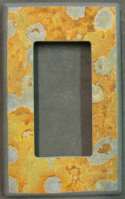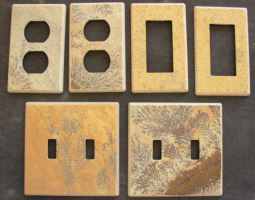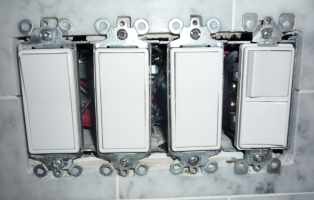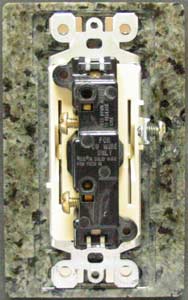In an effort to have a switchplate with no exposed screws we have figured out a way to use magnets glued to the backside of the switchplates to hold them in place. Not only do they look much better but they are easier to install and there are no screws to over tighten, which will cause your switch plates to break. We can't recommend them enough, they are the only way to mount your custom stone switch plates!
Some dimmer switches have aluminum frames which will not automatically work with our magnetic switch plates. The solution for this is to install steel shims that we supply behind the switch. Cable, phone, or data jack plates also have this problem. For thes plates we can supply different steel shims that you glue to your wall above and below the rough opening. Both of these procedures are explained on the Installation Tips page.
Here are some common switches and a receptacle that have steel frames that will work with magnetic switchplates.
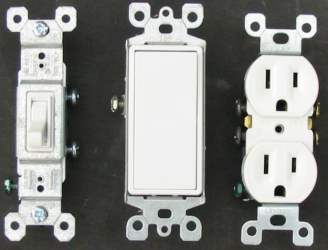
These dimmer switches have aluminum frames that are not magnetic and will need our steel shims installed behind them.
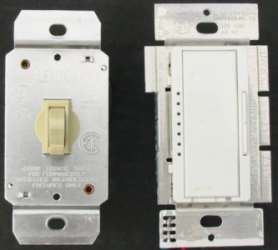
In the photo below you can see where the tile installer notched the tiles to provide clearance for the switchplate mounting screws. Without this clearance it is very difficult to properly install any GFI/ Rocker switchplate that mounts with screws. The screws have to be a perfect length to tighten down the switchplate as they bottom out on the stone under the fixture. The best solution to this problem is magnets!
As nice as the fronts of our switch plates are the backsides are where all of the work is done. Here you can see where the magnets are located and the parts of the fixture to which they are attracted. If the magnets were completely in contact with the steel frames there would be 9-1/4 pounds of force per gang. There is plenty of force to hold our magnetic switch plates in place.

